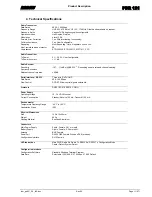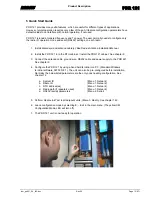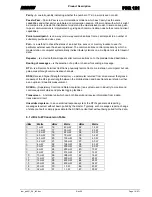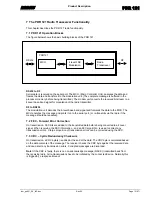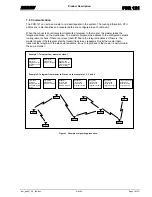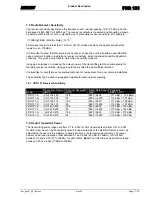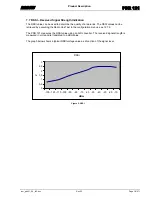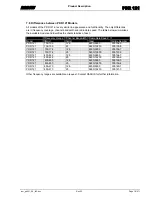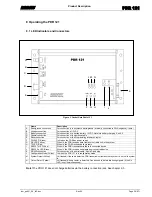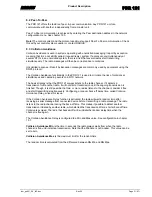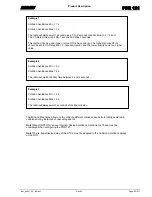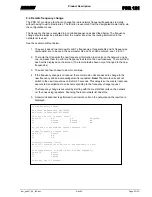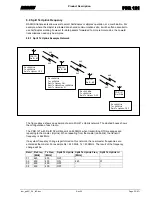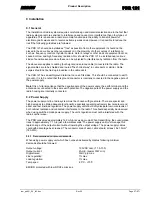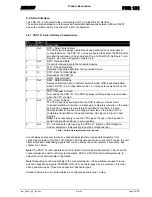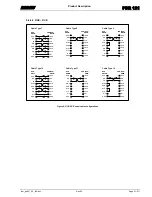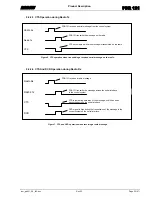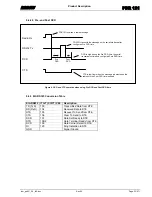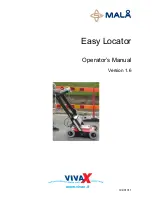
RADIUS
Product
Description
PDR 121
iom_pdr121_04_r02.doc
Rev 02
Page 24 (67)
8.5 Remote Tx power change
The radio transmission power can be changed remotely from any radio on the network. This gives
the network user the possibility to compensate for a weak radio link, if necessary. The transmitter
power can be tuned in steps of 1dB between 0.1 and 2.0W for VHF and 0.5 and 2.0W for UHF
radios (20 dBm to 33dBm and 27 to 33dBm respectively).
Note!
The UHF radios can be factory
tuned between 0.01 to 2.0W (10dBm and 33dBm).
The remote Tx power change is performed via the configuration menus. See chapter 12.8.13.
The Tx power setting can be read from any radio on the network by executing the Radio Link Test.
See chapter 12.7.6.
8.6 Multiple RTU addressing to one radio
The routing technique used in a PDR network allows the user to tie several RTU’s to the same
PDR 121 transceiver. This is achieved by simply configuring several RTU addresses to the same
radio id in the configuration network menu. See chapter 12.5. To be able to communicate to
several RTU’s from the slave radio, a RS485 interface is needed. A RS232 to RS485 converter is
available from RADIUS.
8.7 Radio Link Test
The Radio Link Test is used to check the RSSI levels (Received Signal Strength Indication) and the
Tx power levels of the radios on a chosen link in the radio network. See chapter 14.3.
8.8 Split transmitting and receiving frequencies
If desired, the PDR 121 can be configured to operate with separate Tx and Rx frequencies. For
example, the master can be configured to transmit at 142.000 MHz and to receive at 147.000 MHz.
The slaves shall then be programmed to transmit at 147.000 MHz and to receive at 142.000 MHz.
This type of operation is especially useful if the user wishes to site a master station on a site where
other communications equipment may cause, or suffer, interference. The separate Tx and RX
frequencies also allow the use of any existing aerial combining/distribution systems.
Note!
If separate Rx / Tx frequencies are used, no repeaters can be used between the master and
the slave(s). The frequencies are usually programmed during production but can also be
programmed on site by RADIUS, or by RADIUS trained person, all depending on local radio
restrictions.
Note!
If a split uplink frequency is required as well as repeaters, see the Split Tx Uplink feature in
chapter 8.9.


